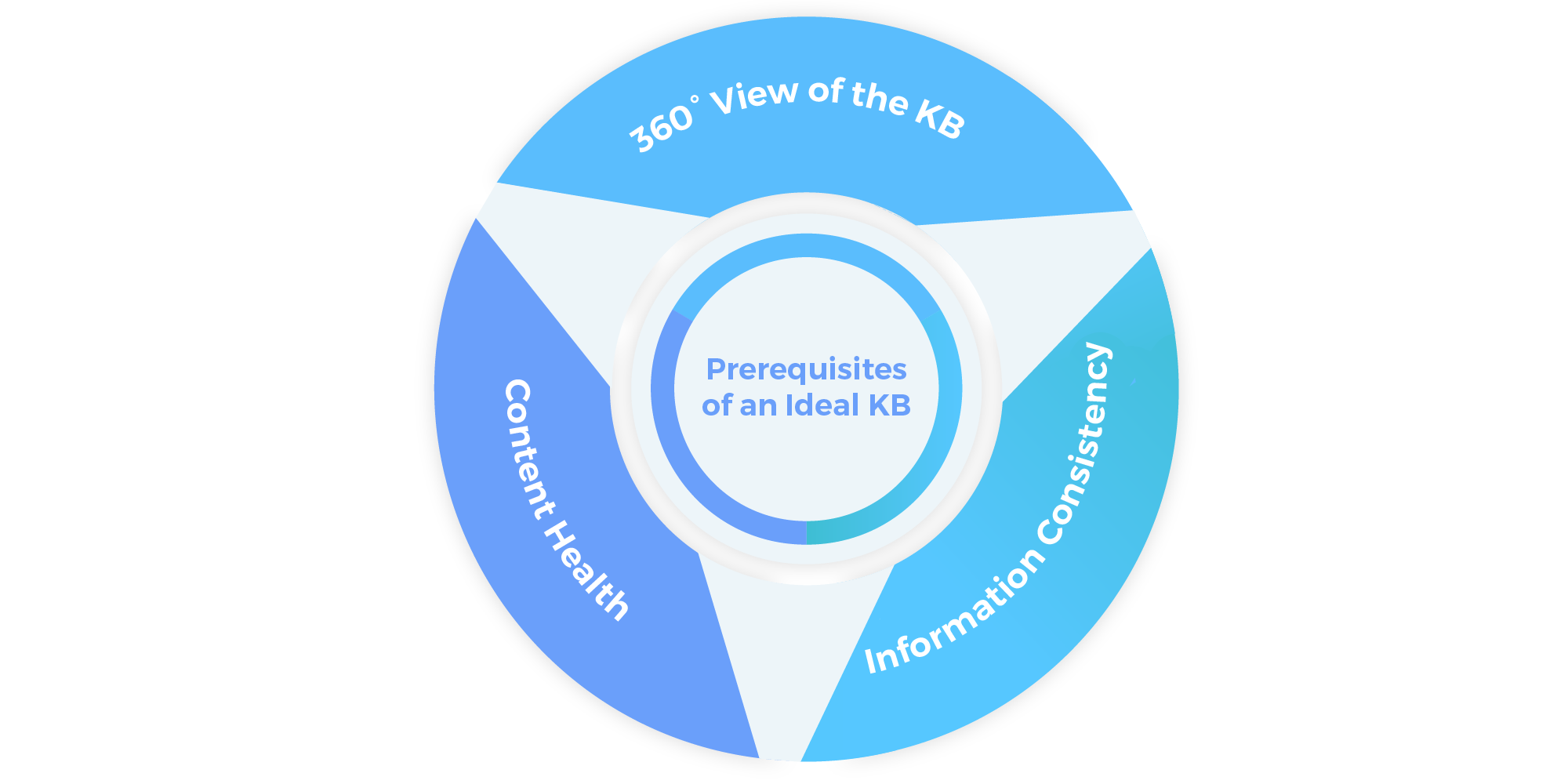
Are you swamped with an overwhelming amount of support tickets? Or do you and your team receive the same queries time and again? If yes, then chances are that you don’t have a robust knowledge base (KB) in place.
With a strong KB, also known as a customer portal, you can empower users to solve their own queries, leaving ample time for you and your team to focus on more complex issues. But what’s an ideal knowledge base? Or how can you create one? Have some patience, and this blog post shall answer all your questions. Let’s get rolling.
Why Should You Have a Strong Knowledge Base?
Organizations that adopt a knowledge base can avail the following benefits:
1. Promote Self-Service
A well-curated KB comprises common resolutions, break/fix solutions, best practices, tutorials, and other help articles. This turns out to be the best and the most cost-effective way to disseminate knowledge to end-users who otherwise may have contacted support agents for help.
Did You Know: According to Zendesk, 91% of users prefer using a knowledge base to self-serve, provided it meets all their needs.
2. Improved Agent Efficiency
A strong knowledge base helps deflect cases. This means a considerable amount of queries will be resolved without any agent effort. As a result, your support staff will be able to focus more on high-value engagements.
3. Reduced Support Costs
Since KBs unveil a source to self-serve, the need to engage the help desk agents for solving common queries via calls or emails reduces. As per HDI, the average cost per ticket for North America is nearly $15.56, but can go up to $50 approx depending on the wages of help desk staff and the time involved in resolution.
4. Seamless Agent Onboarding & Training
For your support teams to scale effectively, it is of utmost importance for your new joinees to be self-sufficient. This becomes a cakewalk with a well-curated and an easily accessible knowledge base as everything they need to know about the company, product, and processes is under one centralized information hub. Additionally, internal KBs ensure that all the updates and changes are communicated to the team consistently and efficiently; thus helping them to keep pace with the inevitably changing support processes.
5. Increased Customer Trust & Loyalty
A customer’s faith in the brand plummets as soon as they experience inconsistent service. Irrespective of what service channel they use or to whom they contact, they expect uniformity in the information. And KB is indeed the best means to keep everyone on the same page and provide consistent information across all channels.
Did You Know: According to Bain & Company, a 5% increase in customer retention correlates with at least a 25% increase in profit.
What are the Prerequisites of a Good Knowledge Base?
A knowledge base that is not up to par does more harm than good. Let’s say an existing feature of your product was upgraded but not the guidelines. A customer followed the instructions and squandered his time. Results? Disgruntled customers. To build a foolproof KB, take into account the following three prerequisites:

[ALSO READ: 9 Factors That Can Improve The Health Of Your Content]
Best Practices to Build a Strong Knowledge Base
The key to creating a strong KB is getting it right from the beginning. With the following tried-and-tested practices, you’ll surely lay a solid foundation for your KB and flourish quickly and efficiently.
1. Know Your Audience
Building a knowledge base isn’t always followed by success until you know your audience (or even utility, for that matter). It is of paramount importance to understand your audience and create articles from their perspective. For example, support knowledge bases can use industry-standard acronyms like CRM or SMEs as opposed to writing customer relationship management or subject matter experts while the same won’t be feasible for textile or edtech KBs.
2. Capture the Collective Knowledge of Support Staff
Enterprise knowledge creation happens every day in both formal and informal ways. However, capturing all the knowledge that is created, shared, or consumed, isn’t a wise idea because it might lead to redundancy and duplication of efforts. With SearchUnify’s Knowbler, you make knowledge creation a part of workflows. This way, you don’t just accelerate the whole knowledge creation process but also save yourself from reinventing the wheel.
3. Ensure Easy Access to Knowledge Base
What’s the point of a KB if it cannot be accessed by the right people at the right time? Harness the power of AI to provide a unified view of your organization’s KB and tap into online customer community, documentation, help center, etc.
Well, SearchUnify’s enterprise agentic platform doesn’t just provide a 360-degree view of the enterprise knowledge, but it also lets you control who can access your content sources for security purposes. Additionally, its AI-powered Agent Helper expedites the resolution timeline by surfacing the relevant help-content whenever an agent opens a new ticket.
4. Incorporate Quality Assurance
Knowledge Base is a critical customer-facing channel which makes it all the more important to track its performance and continuously improve it. The onus to review all the articles for accuracy and completeness must fall upon a knowledge domain expert. Ideally, the following workflow must be incorporated while publishing new articles:

5. Capitalize on Customer Feedback
A KB is closely linked to customer feedback and self-service success. Customers leave digital footprints everytime they visit your portal to access KB. Use these footprints to find out the most searched articles, outdated articles, and queries that are leading to no results, etc. Leverage these learnings to update your KBs and meet the customer requirements. We recommend you to conduct weekly or monthly audits to ensure that you’re covering trending issues.
6. Tap Into Real-Time Insights
Knowledge management doesn’t work well with a fire-and-forget approach. As mentioned in the previous point, you need to continuously update it to keep pace with the changing requirements of customers and trending issues. The best way to go about this is by identifying content gaps using real-time analytics. Understand what users are finding useful and what they are not to bridge the gap accordingly.
Looking for More Insights? Here’s an E-Book that’ll Come in Handy!
The ultimate goal of creating a knowledge base is to empower users to self-serve. Cognitive technology connects the dot between people, processes, and technology to make the right information available at the right time to the right people. Download our e‑book to learn how you can overcome knowledge sharing and management hurdles with cognitive solutions.



















